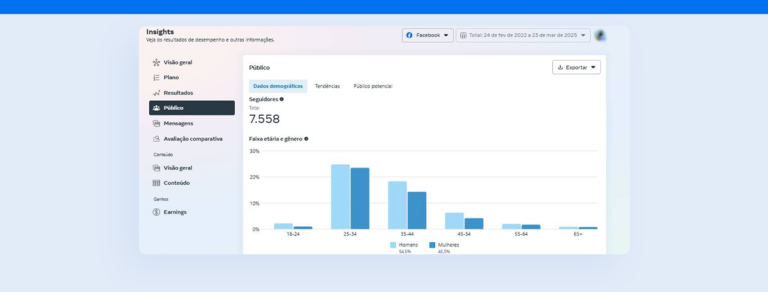Learn which funnel-top, middle, and bottom metrics to include in any report.
When reporting on your digital marketing projects, you may wonder which metrics to add, what data to prioritize, and where to place your insights on the next steps.
Although you’ll have to consider that each client comes with their own objectives and might hire different services, there are highly effective ways of organizing your reports. Then, you can get the decision-maker involved and the decision-maker and draw their attention to the most relevant metrics results.
Here’s an article with the 10 most relevant marketing metrics and a few handy tips on reporting them to clients in meetings. Keep reading!
How to create relevant reports for clients
First, let’s talk about how to create reports that convey more than results. Reports with data for strong storytelling to engage clients in project strategies.
Reporting is, after all, crucial for managing expectations, extracting insights, and proposing ideas.
So, metrics are more than just numbers to show growth or decline. They should also tell a story in context, with main events and hooks for the following chapters.
We recommend using the inverted funnel template for storytelling presentations. We left an exclusive topic in our Data-Driven Analyst course for that technique about presenting the inverted sales funnel to decision-makers.
In other words, when presenting reports, prioritize the most relevant data and then get into the story, highlighting the factors contributing to your results.
The 10 most important marketing metrics
When it comes to the inverted funnel report format, there are 10 important marketing metrics. Here are the main ones for the bottom, middle, and top.
Funnel-bottom metrics
When creating and analyzing reports, funnel-bottom metrics are where to start. Those metrics are relevant to the client’s goals and will engage them throughout the presentation.
Of course, every project has its goals, but keep in mind that the purpose of digital marketing is business growth.
1. Opportunities and Sales
The first metric to analyze in a report should contemplate the main goal of the business and project.
For Inbound Marketing, goals are usually set according to business opportunities within a period. Those are the hot leads the clients’ sales teams should approach.
But since the sales purchasing process works differently for e-commerce, the focus can be on sales. The most important thing to remember is that your reports should be created according to the project’s leading goal.
Don’t forget to track the lead-to-opportunity and opportunity-to-sales conversion rates. That data helps you optimize your strategy to get better funnel bottom results.
2. Ad Conversions
In paid media projects, the background campaign metric conversions are the ones you want to watch. Since clients invest money in channels like Google Ads and Facebook Ads, they’ll want to know if they’re getting results.
So make sure you leave room in your report for the number of sales, opportunities, and contacts coming from your Ads, channels with the most potential, and the conversion rates of each campaign.
3. ROAS
The Return on Advertising Spend (ROAS) complements the data on ad spend and shows the amount of revenue from ads.
So it’s a great metric for gauging whether your paid media campaigns are efficient, and you can plan where to apply your digital marketing investments.
- ROAS = (Return on campaigns / ads costs) x 100
Mid-funnel metrics
Next, come the mid-funnel metrics for lead capturing campaigns (deep-rooted or not), and move them into becoming customers.
4. Captured leads
Just as important as it is to analyze opportunities and sales, you need to evaluate how other actions contribute to your lead capture. Building a contact base moves the funnel, generating more sales leads.
You also need to understand which channels most affect your lead capture (paid media, organic, or social networks) and can use those insights to plan more efficient campaigns.
5. Conversion rate
Again, it’s worth noting that besides analyzing the number of leads, you’ll need to evaluate the conversion rates of your main lead capture material. How many conversions come from the number of visitors to your Landing Page?
The answer to that question will help you identify what to improve in your landing page, reveal the rich material formats that promote engagement, and how to optimize lead quality at the bottom of the funnel.
6. Cost per acquisition
Don’t leave out the Cost per Acquisition metric (CPA) for ad campaigns, showing the cost per conversion (downloads of ebooks, e-commerce sales).
This metric shows you whether ads are meeting goals, so the lower your CPA number, the better use you are making of investments.
Funnel top metrics
Finally, we’ve come to the top of the inverted funnel report, for campaigns aimed at larger audiences, through content on social networks, blogs, or websites.
7. Site visits
First, it’s important to analyze the number of visits to your website/blog, as those platforms are usually the gateway for capturing leads at all funnel stages.
Through site visits, you can identify the channels that draw visitors in the first place (like paid or organic searches). You can find out which pages users access the most and those with the highest rejection rates to make optimizations for higher website retention.
8. Reach
The reach metric is usually linked to social media content and ads because it shows the number of unique users impacted by content and exposure to the brand.
Although reach alone won’t give you a well-rounded view of successful marketing actions, complementing it with the engagement metric gives you insight into the company’s visibility in the top-funnel channels. It also shows you how each contributes to the performance of the other funnel stages.
9. Engagement rate
When analyzing reach, it’s a good idea to present the engagement rates with the content or ads they represent. Engagement shows the relationship between interactive marketing (likes, comments, and shares) and the number of social network users reached.
It helps you understand how relevant content is or if you need to tweak any content or your audience segmentation (for paid campaigns).
For example, in Google Analytics 4, the engagement rate is one of the most important metrics for insight into user interaction events.
10. Click Through Rate (CTR)
Last, let’s talk about the Click Through Rate (CTR), the ratio between clicks on a link and impressions/reach (paid media or organic search).
This indicator gives you insight into how your ad creatives, titles, and page descriptions impacted users. A low CTR is a sign that adjustments should be made to attract more clicks.
Generate digital marketing reports in seconds
Although these ten metrics are the most relevant, they aren’t the only ones that should go into a report. You’ll need to complement the information in your projects with other metrics.
Count on Reportei to help you generate reports that clearly show marketing action results as a whole! You can capture comprehensive data from your channels, covering the bottom, middle, and funnel top.
Then you can give your client a bird’s eye view of your digital marketing actions, using customizable templates made to fit their needs. You can also keep a record of all your analyses using different formats like text, images, or videos.
Start your free 3-day trial and watch your digital marketing report analyses become more strategic!





